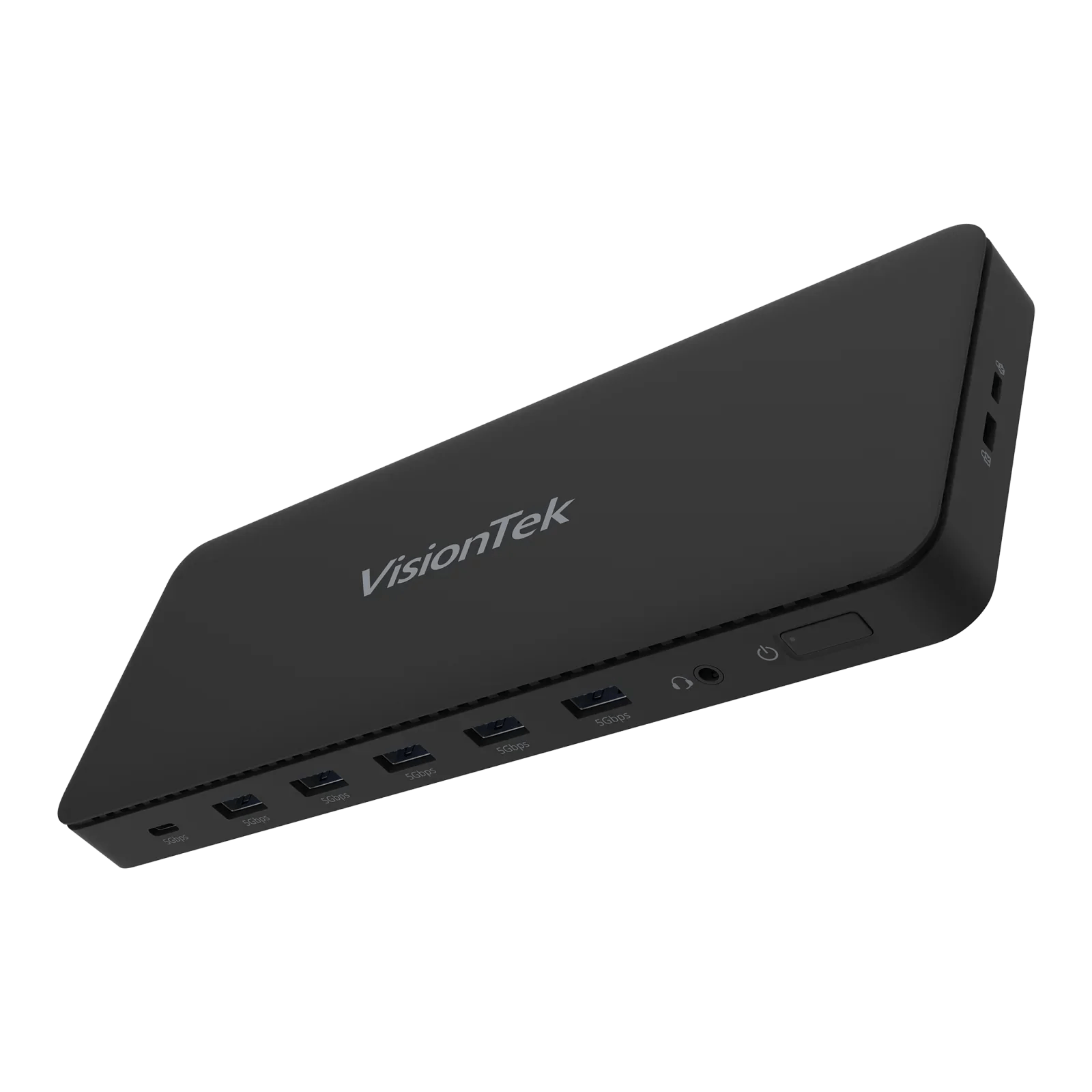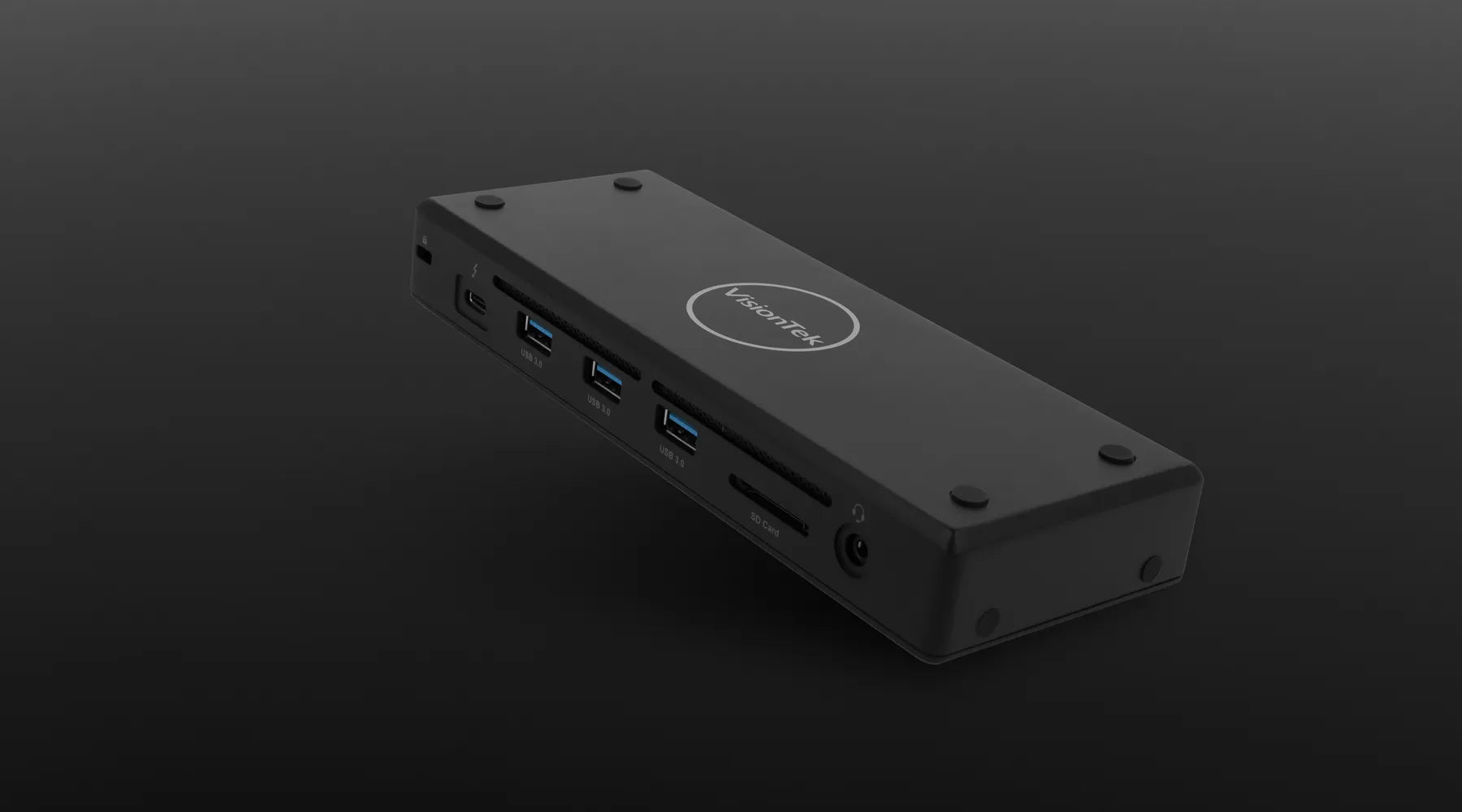Thunderbolt™ 3 vs. Thunderbolt™ 4
It’s time to breakdown the differences in capabilities between the widely used Thunderbolt™ 3 connection and its successor: Thunderbolt™ 4.
In broad strokes, Thunderbolt™ 4 describes the progression in the Thunderbolt™ connectivity protocol that supports fast data transfer, charging, and high-res video via the ubiquitous USB-C connector. Under the hood, not much change has been introduced in this new iteration, but there are some important points to note when it comes to accepted specifications.
Let’s take a look at what the jump from Thunderbolt™ 3 to Thunderbolt™ 4 provides:
A Quick Snapshot of Thunderbolt™ 3
Until recently, Thunderbolt™ 3 was the widely held standard for high-speed connections capable of fast transfer speeds, charging and video display. The original Thunderbolt™ and Thunderbolt™ 2 protocols used DisplayPort connectors for supplying high-res video streaming, but with USB-C taking over as the most popular connector across the board, Thunderbolt™ 3 made the leap in 2014 to a Type-C connector and has never looked back.
Beyond this significant change in connection, Thunderbolt™ 3 also doubled the 20 gigabit per second bandwidth of its predecessor (two bi-directional 10 Gbps channels). Now the fastest port available, Thunderbolt™ 3 offered 40 gigabits per second (two bi-directional channels at 20 Gbps transfer speeds).
In 2017, Intel has worked closely with Dell, HP, and Lenovo to produce computers and laptops with the Thunderbolt™ 3 interface and now a very large percentage of mid tier and above laptops have Thunderbolt™ Ports. Thunderbolt™ 3 has become one of the most popular connections on the market.
From the visuals perspective, it brought about the ability to simultaneously drive two external 4K monitors at 60Hz, or a single 4K display at 120Hz.
Lastly, the power overhead for Thunderbolt™ 3 is half that of Thunderbolt™ 2. Thunderbolt™ 3 can provided 100W of power delivery to host systems, regularly saving users from the need to implement a separate power supply.
So, What’s New with Thunderbolt™ 4?
When all the specs are accounted for, Thunderbolt™ 4 (sometimes referred to as TB4) isn’t a giant leap from the Thunderbolt™ 3 protocol.
The primary difference comes from raising the floor on the specifications required for its connection type. In order to get certification, TB4 is required to meet a much stricter set of capabilities than Thunderbolt™ 3.
Where Thunderbolt™ 4 laptops are required to support up to two 4K displays or one 8K display, Thunderbolt™ 3 is only required to support a single 4K monitor. This causes unfortunate confusion for some consumers who are unsure whether the manufacturer they are purchasing from has a port that supports one or two displays at 4K resolutions.
Additionally, data transfer requirements are doubled from TB3 standards, with 32Gbps available for devices allows external storage speeds up to 3,000 MB/s.
Connection Type
So how do I distinguish between USB4 and Thunderbolt™ 4 – aren’t they the same? This question is common for those who confuse a physical data transmission connector for a standard. Both Thunderbolt™ 4 and USB4 use the USB-C connector, so the connection ports will all look the same apart from a small difference. All Thunderbolt™ 4 ports are marked with a small lightning bolt icon above the port itself, not to be confused with the fast-charging logo common on many modern laptops.
Also, Thunderbolt 4 is compatible with all previous generations of Thunderbolt™ and USB peripherals, though not all physical connection types are the same.
Data Transfer & Visuals
Though a Thunderbolt™ 4 connection still offers 40 Gbps, TB4 now allows not only the Dual 4K displays brought about by TB3, but more power in its single monitor capabilities. Whereas TB3 allowed up to 5K video via a single monitor, TB4 now provides up to 8K resolutions when using a single display.
In Summary
While Thunderbolt™ 4 may not provide exciting new display capabilities to leverage in your computer setup, it does a lot to secure confidence in the specifications and capabilities of products that claim the support of this protocol. Ultimately, the switch to Thunderbolt™ 4 is inevitable with the introduction of USB4 and the natural progression of industry tech.
Product Highlight: VT5400 Thunderbolt™ 4 Docking Station
Outshining standard docking stations in data and video performance, our Thunderbolt™ 4 VT5400 dock is ideal for content creators, gamers and streamers who want to record and capture video at the highest settings possible. Offering the most compatibility and best performance possible, this dock provides versatility without sacrificing power. Access the productivity and convenience of dual external monitors provided via a Thunderbolt™ 4 connection.
Thunderbolt and the Thunderbolt logo are trademarks of Intel Corporation in the U.S. and/or other countries.





Share:
VT5400 – Thunderbolt™ 4 Docking Station
More to Know About USB-C Connections - (USB-C Continued)